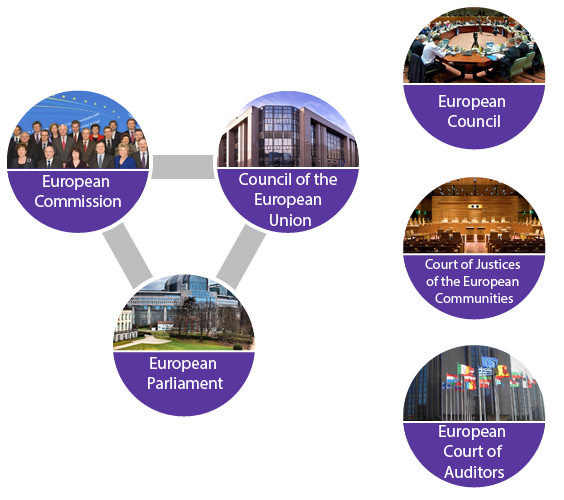Can we compare European Institutions to national governing bodies?
The EU is unique because of its institutions. As you probably already know, the EU institutions are different from institutions that can be found at a national level. This is why it can sometimes be hard to understand how they function. But let’s try to sum-up how different EU institutions are to the national ones.
As stressed by McCormick, we could compare the institutions to the governing bodies of the member states:
- we could compare the European Parliament to a national parliament, but we need to remember that the European Parliament does not have all of the powers normally given to a nation state’s parliament
- the European Commission could be compared to national bureaucracies, but it does have additional leadership functions
- the European Council could be seen as an upper chamber of the legislature and the Council of Ministers could be compared to the lower one, but none of them is directly elected by the citizens.
(McCormick, 2011a, p.74)

EU institutions are made up of people. What consequences does this have for research?
Let’s not forget that EU institutions are made up of people: representatives, Heads of States and Governments, politicians and experts from all 28 Member states. The decision-making process is, therefore, not free from a socialisation process that has an influence on the working of the institutions. At the same time, it is through this socialisation process that much of national bargaining takes place.
Calendar
| M | T | W | T | F | S | S |
|---|---|---|---|---|---|---|
| 1 | 2 | 3 | 4 | 5 | 6 | 7 |
| 8 | 9 | 10 | 11 | 12 | 13 | 14 |
| 15 | 16 | 17 | 18 | 19 | 20 | 21 |
| 22 | 23 | 24 | 25 | 26 | 27 | 28 |
| 29 | 30 | 31 | ||||
Leave a Reply